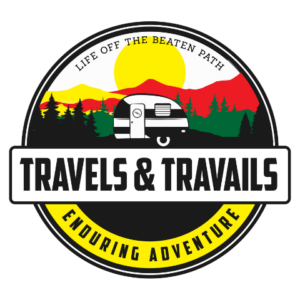We’ve all had those moments, the moment when your dog won’t stop barking at your campsite. One of my most embarassing moments was when a camper approached my campsite and my dog, restrained on a tie out, started barking and lunging at the friendly camper. This situation made me wonder, “How do I stop my dog from barking at campsites?” I’ll bet you’re wondering this too.
To stop your dog from barking at a campsite, understand why it is barking, gradually expose it to the environment, exercise it, distract it, and train it to stay quiet on command using positive reinforcement.
Read on to find out some tips about how to stop your dogs irritating barking.
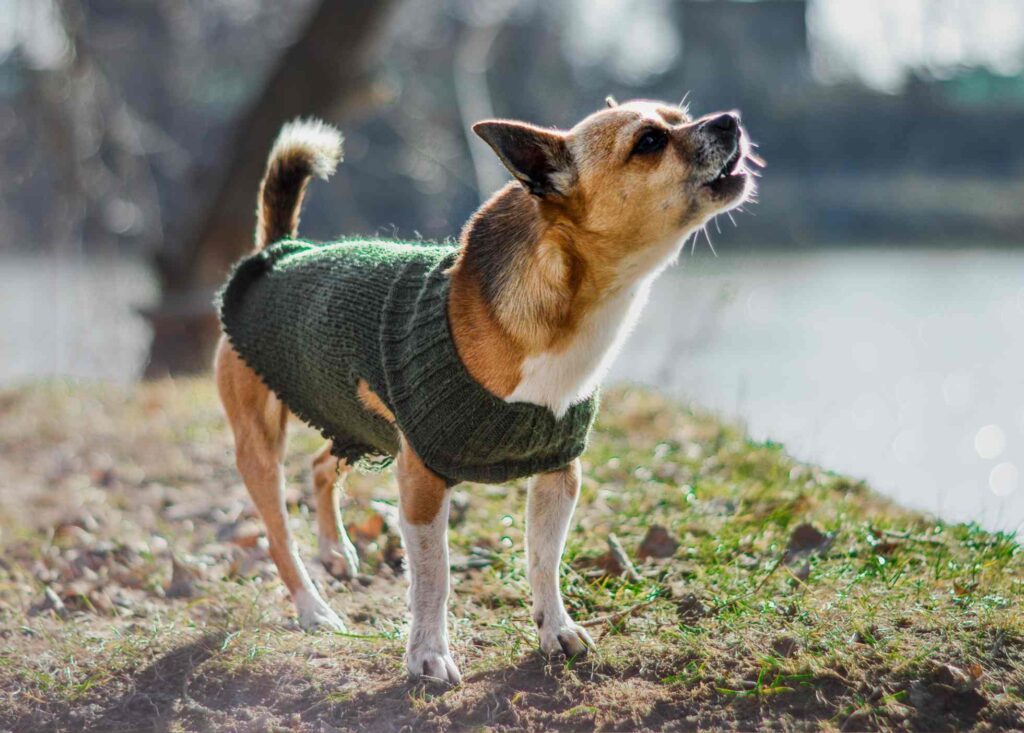
Why Do Dogs Bark?
Understanding what is causing your dog to bark is the first step to keeping them quiet at the campsite.
Your Dog is Communicating
Barking is one of the primary ways dogs communicate with humans and other animals. It can be used to alert others of danger or to get attention.
When your dog barks at a campsite, it is likely communicating something to you or to other dogs or people in the area. Dogs have evolved to use barking as a means of communication with humans and other animals.
If your dog is barking at a campsite, it may be trying to alert you to something it perceives as a threat or danger. This could be anything from a nearby animal to an unfamiliar sound or smell. Dogs have a strong sense of hearing and smell, so they may pick up on things that humans do not.
Alternatively, your dog may be barking to communicate with other dogs in the area. This could be a sign of territorial behavior, as your dog may be trying to establish dominance or protect its space. It could also be a sign of playfulness or excitement, as your dog may be trying to initiate play or interaction with other dogs.
In any case, it’s important to pay attention to your dog’s barking and try to understand what it is trying to communicate. This can help you address any underlying concerns or issues and ensure that your dog feels safe and secure at the campsite. Additionally, if your dog’s barking is disruptive or bothersome to other campers, it’s important to take steps to address the behavior and prevent excessive barking.
Your Dog is Asserting His Territory
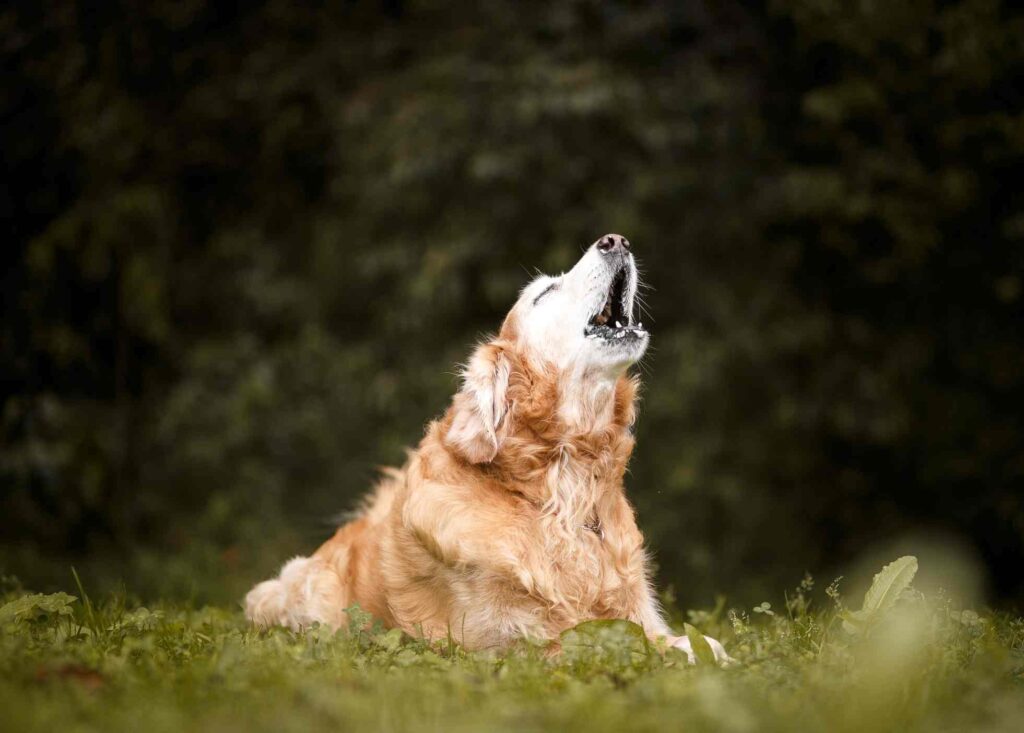
Dogs may bark to protect their territory or to ward off perceived threats. This is often seen when a dog barks at people or animals that approach its home or yard.
When your dog barks at a campsite, it may be asserting its territory and trying to protect it. Dogs are territorial animals, and they use barking as a means of communicating with other animals and humans that they perceive as a threat or as an intrusion into their space.
At a campsite, your dog may see other people or dogs as a potential threat to its territory. This can be especially true if the campsite is new or unfamiliar to your dog, or if it has encountered other dogs or people that it perceives as a threat in the past.
To your dog, barking may be a way to establish its presence and assert its dominance in the area. This can be seen as a protective behavior, as your dog is trying to keep other animals or people away from its space.
Your Dog is Fearful or Anxious
Dogs may bark when they are afraid or anxious. This can happen when they encounter new people, animals, or situations that they are not familiar with.
When your dog barks at a campsite, it may be exhibiting fearful or anxious behavior. Dogs can become anxious or fearful in new or unfamiliar environments, and they may use barking as a way to communicate their discomfort or distress.
If your dog is barking out of fear or anxiety, it may be trying to alert you to its discomfort or to protect itself from perceived threats. This can be especially true if your dog is not used to being in new or unfamiliar environments or if it has had negative experiences with other animals or people in the past.
If you’re worried about your dog’s anxiety at the campground, read this article that I wrote.
Your Dog is Feeling Playful or Excited
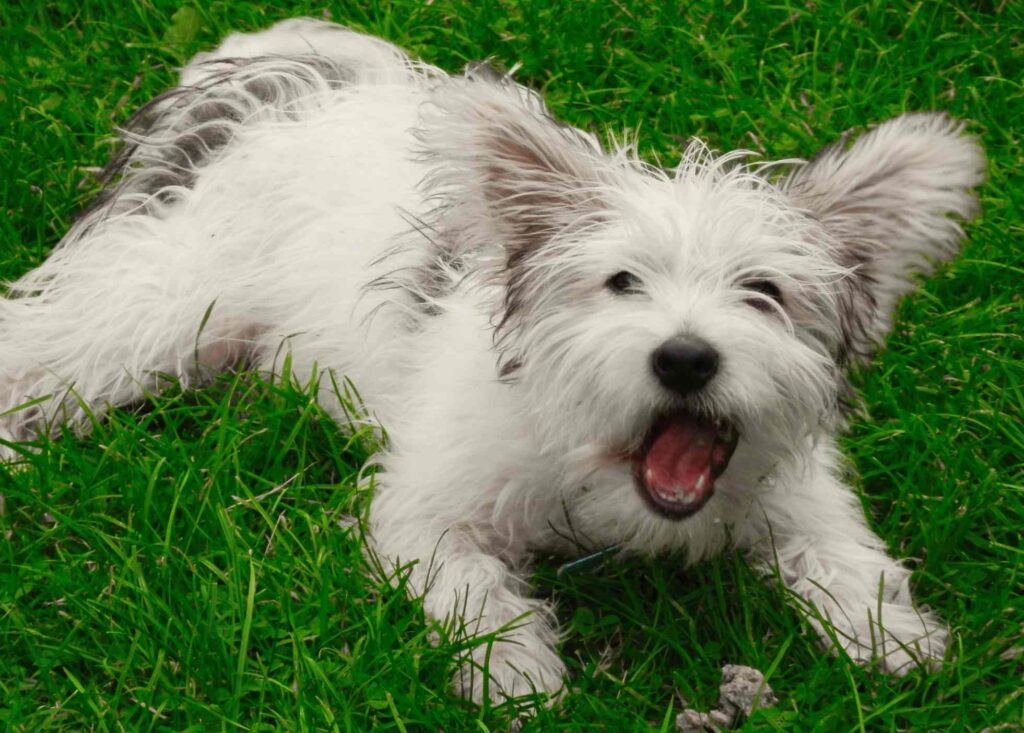
Dogs may bark when they are feeling playful or excited. This is often seen when they are playing with other dogs or interacting with their owners.
When your dog barks at a campsite, it may be exhibiting playful or excited behavior. Dogs often use barking as a means of communication when they are feeling happy or stimulated, and they may bark to initiate play or interaction with other dogs or humans in the area.
If your dog is barking out of playfulness or excitement, it may be trying to engage with you or other dogs in the area. This can be especially true if your dog is young or has a high energy level.
Your Dog is Bored or Wants Attention
When your dog barks at a campsite, it may be exhibiting behavior that indicates it is bored or wants attention. Dogs are social animals and they crave interaction and stimulation, and they may use barking as a means of getting your attention or expressing their frustration.
If your dog is barking out of boredom or to seek attention, it may be trying to engage with you or other people in the area. This can be especially true if your dog is not getting enough exercise or mental stimulation, or if it is not used to being left alone for long periods of time.
Ways to Keep Your Dog From Barking at the Campsite
There are several things you can try to keep your dog quiet at the campsite.
Gradually Expose Your Dog to the Campground Environment
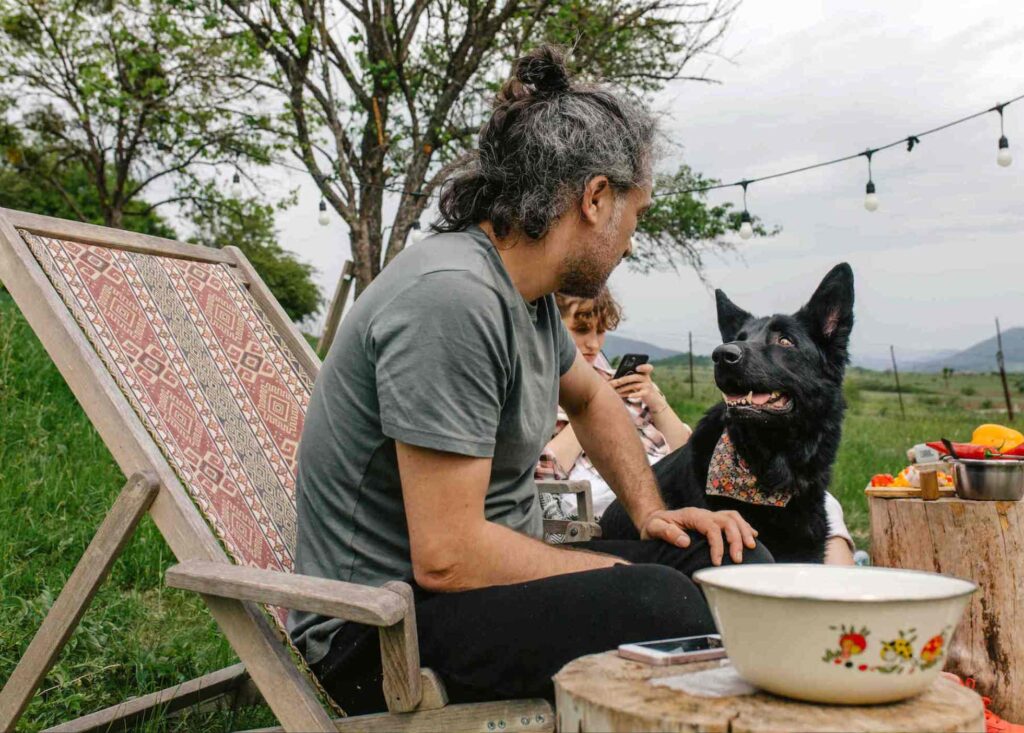
New experiences can be challenging for dogs. Before you go full-bore on a week-long camping trip, consider taking your dog on a solo overnight trip. That way, you can be 100 percent focused on your dog’s needs.
It may also be helpful to slowly acclimate your dog to the campsite environment over time. This can include taking short walks around the area with your dog, and gradually exposing it to other animals or people in the area.
I noticed that, if I take my dog for a walk around the whole campground when we first get there, she is less likely to bark at the campsite.
This may be overwhelming if you have a timid dog. Here are a couple of tips for the more timid dog:
- Start Small: Begin by introducing your dog to a small area of the campground, such as your campsite or a nearby trail. Allow your dog to explore and sniff around, but keep it on a leash and close to you at all times.
- Increase Exposure Gradually: Once your dog is comfortable in a small area of the campground, gradually increase the amount of time it spends in the environment. Take your dog on short walks around the campground, or sit with it at a nearby picnic table or another quiet area.
It’s important to help your dog feel safe and secure in the campsite environment. You can do this by providing your dog with a comfortable and familiar sleeping area, as well as plenty of toys and other distractions to keep it occupied.
Use Postive Reinforcement with Your Dog
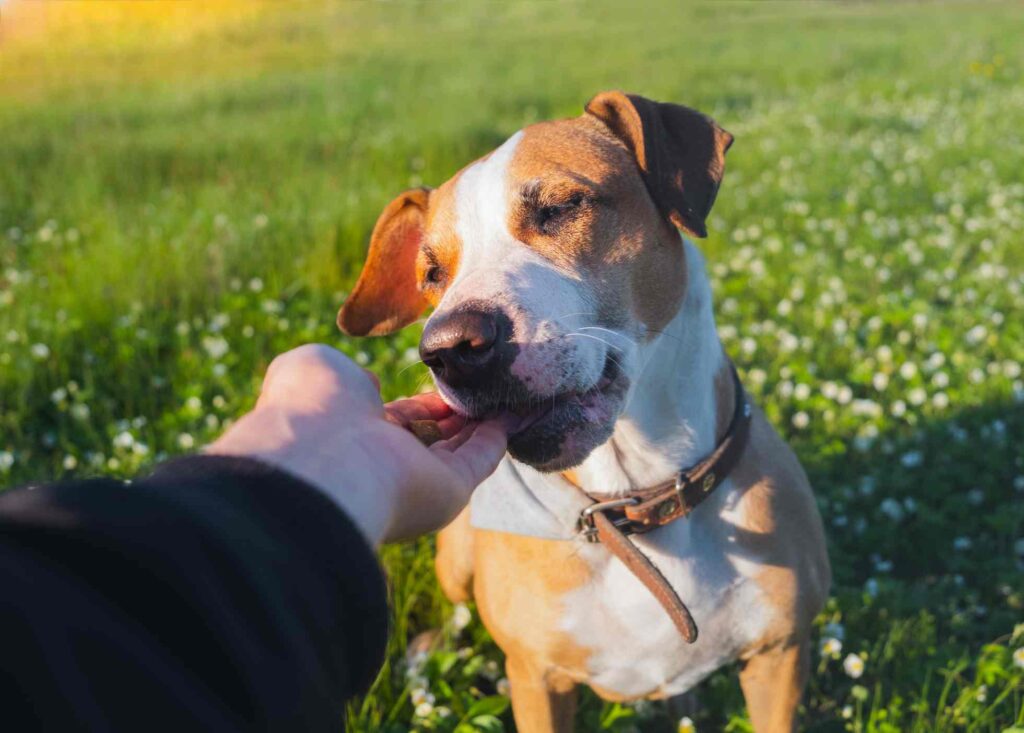
Positive reinforcement is merely rewarding your dog for good behavior.
Try using positive reinforcement techniques to encourage your dog to stay calm and relaxed at the campsite. This can include rewarding your dog with treats or praise when it remains calm in the presence of other people or dogs. Rewarding your dog will help him associate positive experiences with the campground environment.
We keep treats handy to reward our dog for good behavior. For example, when someone walks by the campsite and she doesn’t bark, we give her treats.
Socialize Your Dog
A research study in the journal Frontiers in Veterinary Science states the following:
“Proper socialization has been shown to have a profound impact on the development of behavior in dogs, with well-socialized dogs being more confident, less fearful, and better able to adapt to new situations than poorly socialized dogs. Early exposure to a variety of people, animals, and environments is key to promoting positive socialization in dogs, and can help to prevent the development of behavioral problems later in life.” (Arhant et al., 2019)
It’s important to properly socialize your puppy. But what if you adopt an adult dog? Can an adult dog be properly socialized?
It is possible to socialize an adult dog, although it may require more time and effort than socializing a puppy. Socialization is an ongoing process that involves exposing your dog to a variety of people, animals, and environments in a positive and controlled manner.
Adult dogs may have already developed certain behaviors or fears that may require more patience and care to address, but with patience, consistency, and positive reinforcement techniques, adult dogs can learn to overcome their fears and develop positive social behaviors.
It’s important to note that socialization is a lifelong process, and adult dogs may still benefit from continued socialization efforts throughout their lives. If you are unsure how to properly socialize your adult dog, it may be helpful to consult with a professional dog trainer or behaviorist to develop a socialization plan tailored to your dog’s individual needs.
Exercise Your Dog
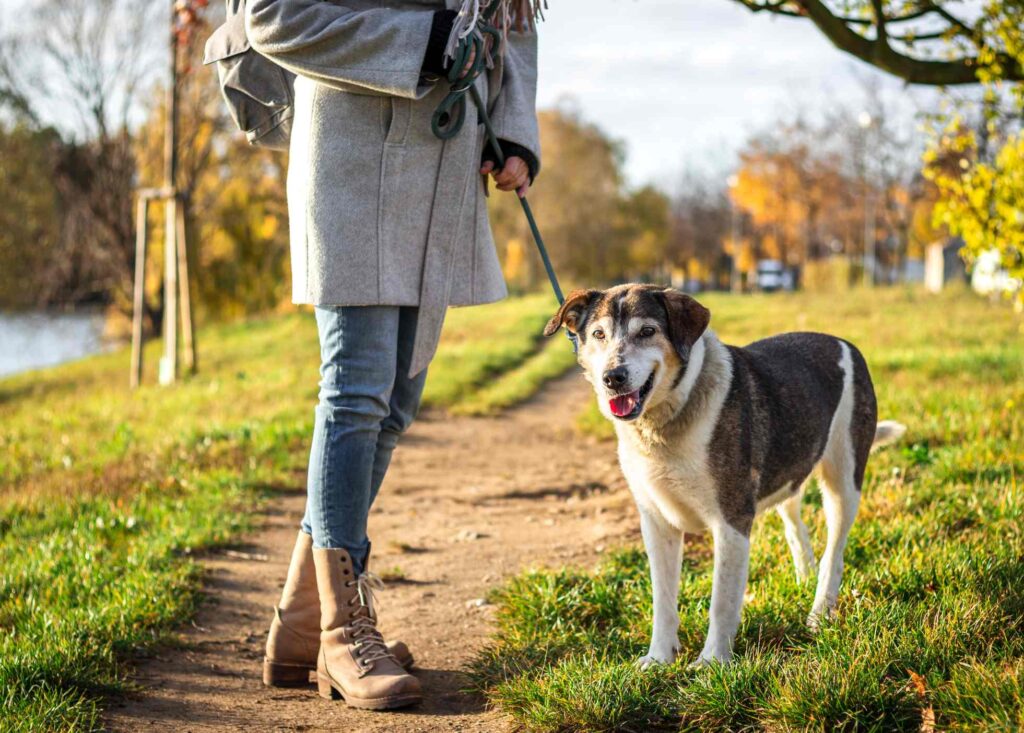
Make sure your dog gets enough exercise before going to the campground. A tired dog is less likely to bark excessively.
Here are some tips for exercising your dog at a campsite:
- Take your dog for walks: Walking is an excellent form of exercise for dogs, and can also help your dog become more familiar with the campground environment. Take your dog for regular walks around the campground, and consider exploring nearby hiking trails or other outdoor areas.
- Play fetch: Many dogs love to play fetch, and it’s a great way to get them moving and burn off energy. Bring along a ball or other toy and play a game of fetch with your dog in a safe and enclosed area.
- Go for a swim: If your campsite is near a lake, river, or other body of water, consider taking your dog for a swim. Swimming is a low-impact form of exercise that is great for dogs of all ages and fitness levels.
- Try agility training: Agility training is a fun and challenging way to exercise your dog while also building its confidence and obedience skills. You can set up a simple agility course at your campsite using cones, jumps, and other obstacles.
- Provide mental stimulation: In addition to physical exercise, dogs also need mental stimulation to stay happy and healthy. Consider bringing along puzzle toys, food dispensers, or other interactive toys that your dog can play with at the campsite.
Remember to always supervise your dog during exercise and provide plenty of water and rest breaks. If your dog is not used to regular exercise, start with shorter sessions and gradually increase the duration and intensity of activity over time.
Distract Your Dog
Bring along toys or treats to distract your dog when it starts barking. You can also try playing music or white noise to help mask other sounds that may trigger your dog’s barking.
Distracting your dog can be an effective way to redirect its attention away from barking and other disruptive behaviors at a campsite. By providing your dog with an alternative activity or focus, you can help it become more calm and relaxed in the campground environment.
Here are some tips for distracting your dog at a campsite:
- Bring along toys and chew items: Toys and chew items can help keep your dog entertained and occupied while at the campsite. Bring along your dog’s favorite toys and chews, and offer them to your dog when it begins to bark or show signs of anxiety.
- Play interactive games: Interactive games, such as hide and seek or fetch, can help distract your dog and provide mental stimulation. These games can be played in a small area of the campsite or nearby open space.
- Provide food puzzles: Food puzzles, such as treat dispensers or puzzle toys, can help keep your dog engaged and mentally stimulated. These toys challenge your dog to work for its food, which can help redirect its attention away from barking and other disruptive behaviors.
- Teach your dog new commands: Teaching your dog new commands, such as “sit” or “stay,” can provide mental stimulation and help your dog learn to focus on you instead of its surroundings. These commands can also be used to redirect your dog’s attention away from barking.
- Use positive reinforcement: Positive reinforcement, such as treats and praise, can help reinforce good behavior and distract your dog from barking. When your dog is quiet and calm, reward it with treats and praise to encourage that behavior.
Remember that every dog is different and may respond differently to different distractions. Be patient and consistent in your training efforts, and seek the help of a professional trainer or behaviorist if you are having difficulty managing your dog’s behavior at the campsite.
Train Your Dog to Stay Quiet
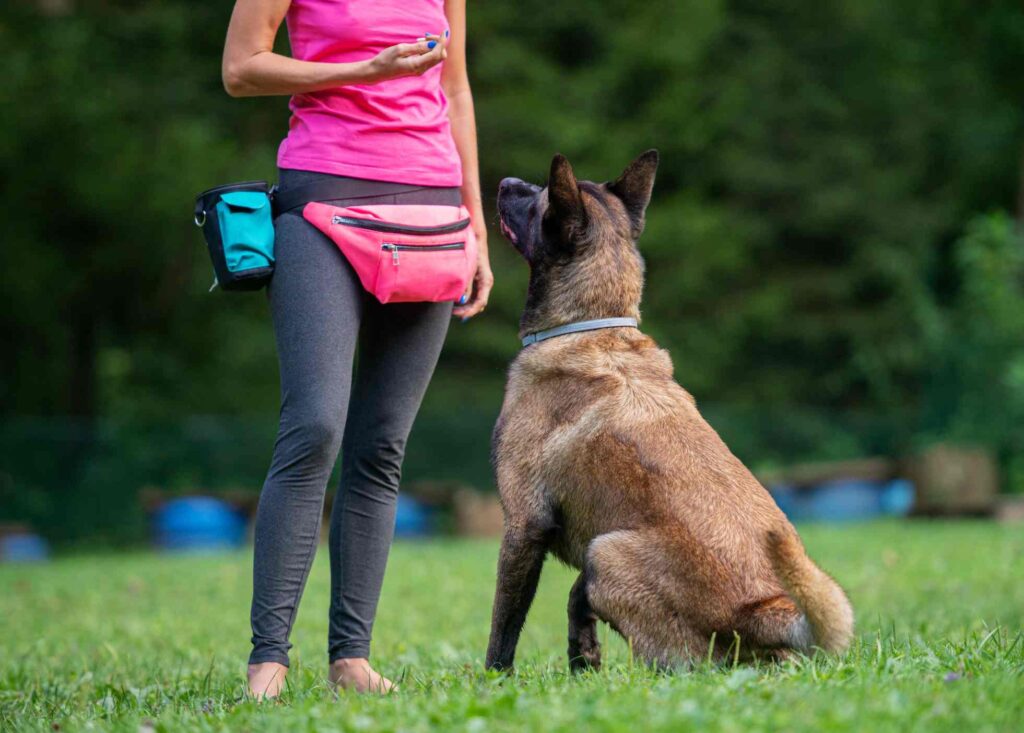
Start by training your dog to respond to basic commands like “sit,” “stay,” and “quiet.” This can help your dog learn to control its behavior and reduce its barking.
Training your dog to stay quiet on command can be an effective way to manage its barking at a campsite. By teaching your dog to be quiet when you give the command, you can help prevent it from barking excessively and disturbing other campers.
Here are some tips for training your dog to stay quiet at a campsite:
- Use positive reinforcement: Positive reinforcement training is a method of training that uses rewards, such as treats and praise, to encourage good behavior. When your dog is quiet, reward it with treats and praise to reinforce that behavior.
- Start with short training sessions: Begin by training your dog to be quiet for short periods of time, and gradually increase the duration of the training sessions over time. This will help your dog build up its ability to stay quiet for longer periods of time.
- Use a quiet command: Choose a command, such as “quiet” or “enough,” that you will use to tell your dog to be quiet. When your dog barks, give the command and wait for it to stop barking. When it is quiet, reward it with treats and praise.
- Be consistent: Consistency is key when training your dog to be quiet. Make sure that everyone in your camping group is using the same command and rewarding your dog for being quiet.
- Practice in different environments: Practice training your dog to be quiet in different environments, such as at home, in the park, and at the campsite. This will help your dog generalize the behavior and learn to be quiet in different situations.
Remember that training takes time and patience, and that every dog is different. If you are having difficulty training your dog to stay quiet, seek the help of a professional trainer or behaviorist.
When Your Dog Keeps Barking
If you’ve tried everything and nothing works, it’s time to seek professional help. If your dog’s barking is persistent and disruptive, seek the help of a professional dog trainer, a behaviorist, and/or your veterinarian. They can assess your dog’s behavior and provide you with more personalized advice, training techniques, and/or medication.
Conclusion
Managing a barking dog at a campsite requires a combination of understanding your dog’s behavior, socializing it, exercising it, and training it to be quiet. With patience, consistency, and appropriate training, you can help your dog become a well-behaved and happy camper.
